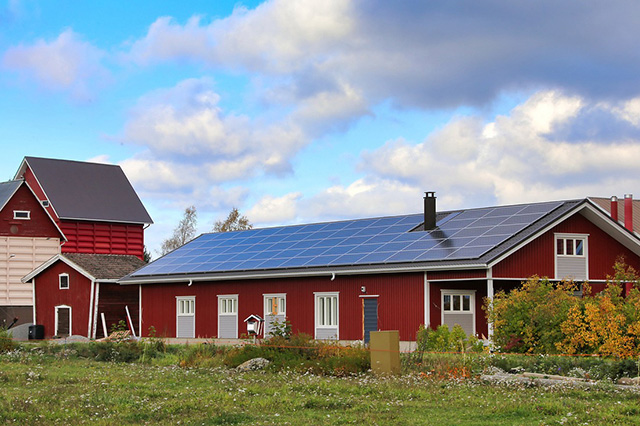Harnessing the Sun’s Energy
Solar panels, composed of photovoltaic (PV) cells, convert sunlight directly into electricity by leveraging the photovoltaic effect. When photons from sunlight strike semiconductor materials like silicon, they dislodge electrons, creating an electric current. This process generates clean energy without emitting greenhouse gases, making solar power a cornerstone of global decarbonization efforts. Modern panels achieve efficiency rates exceeding 20%, with research pushing boundaries toward 30% or higher. Innovations such as bifacial panels, which capture sunlight from both sides, and perovskite-silicon tandem cells, which combine materials for greater absorption, are accelerating progress.
Environmental and Economic Benefits
The environmental advantages of solar panels are undeniable. A typical residential system offsets 4–5 tons of CO₂ annually, equivalent to planting 100 trees each year. On a grand scale, solar farms like India’s Bhadla Solar Park—spanning 14,000 acres—generate 2.2 GW of electricity, reducing reliance on coal and curbing air pollution. Economically, solar energy has become one of the most affordable power sources, with costs dropping 89% since 2010. Governments and businesses now adopt solar to hedge against volatile fossil fuel prices, while homeowners benefit from long-term savings on electricity bills.

Overcoming Challenges Through Innovation
Critics often cite intermittency and storage limitations as barriers to solar adoption. However, advancements in battery technology, such as lithium-ion and flow batteries, enable efficient energy storage for nighttime or cloudy days. Hybrid systems pairing solar with wind or hydro power further enhance reliability. Additionally, floating solar farms on reservoirs and lakes address land scarcity while reducing water evaporation—a win-win for energy and water conservation.
A Bright Horizon
The future of solar panels is radiant with possibility. Scientists are developing transparent solar windows for skyscrapers and flexible PV films for wearable technology. Meanwhile, initiatives like the EU’s Solar Rooftop Program aim to install panels on all new buildings by 2030. As the world races to limit global warming, solar energy stands as a testament to human ingenuity, offering a scalable, equitable path to a zero-carbon future. By embracing the sun’s boundless potential, we can illuminate a cleaner, more resilient planet for generations to come.